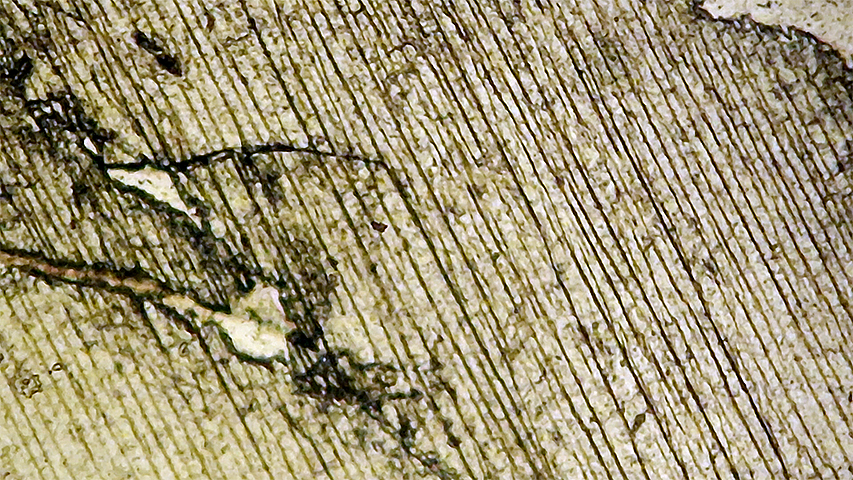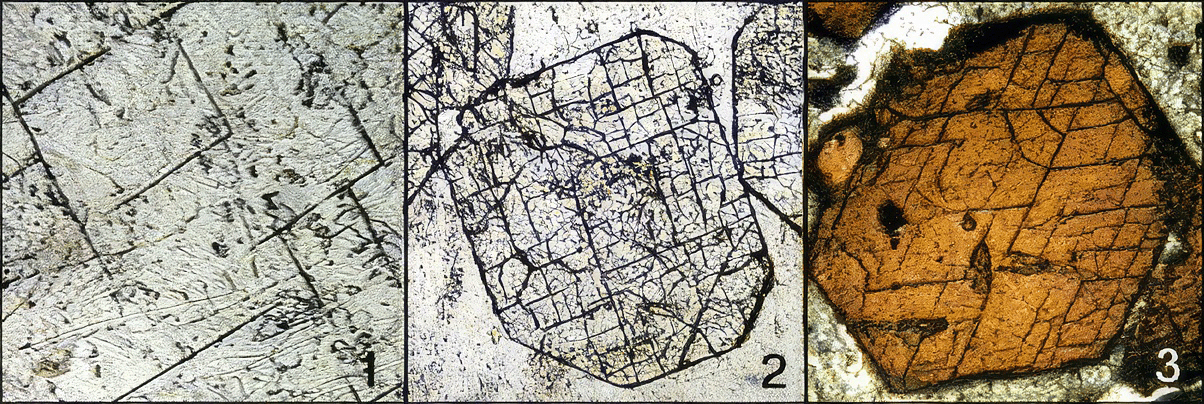
Only one preferential direction is appreciable for a crystal which splits into very thin plates of the mineral. This is very common in the minerals which have a layered structure, such as phyllosilicates.

Two plane surfaces appear. These surfaces split according to particular angles for each kind of mineral. The figure shows that these are perpendicular for a feldspar (1) or form a rhombus for the silicates whose structure is constituted by chains. In the case of the pyroxenes (2) the angles are very close to 90º, whilst for amphiboles (3), the largest angle is close to 120º.
